Products You May Like
Receive $50 off an eligible $100 purchase at the Outside Shop, where you’ll find gear for all your adventures outdoors.
Sign up for Outside+ today.
Maui isn’t just one big beach, it’s a mountain. Yes, you’ll find plenty of palm trees, tropical drinks and lounge chairs poolside, but the Garden Isle also offers an incredible array of outdoor itineraries, from hikes through bamboo groves and lush rainforest to otherworldly rambles across a landscape resembling the surface of Mars. Along the way you can encounter endangered species like the nēnē goose (Hawaiian state bird) and the spiky, alien-looking Haleakalā silverswords, all within a day’s driving distance.
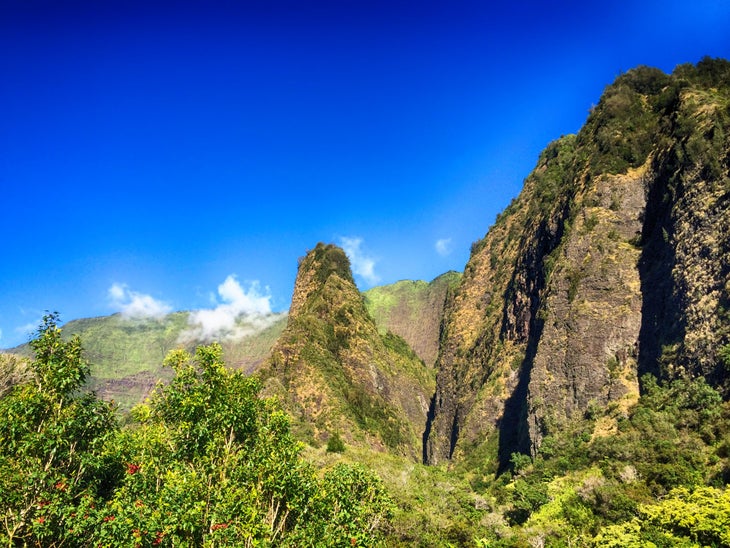
- 2 miles roundtrip
- 134 feet elevation gain
- Loop
- Easy
Explore a tropical rain forest on this short 2-mile loop to ʻIao Valley Needle, an erosional feature that rises 1200 feet from the valley floor. Clouds and mist congregate in the upper valley, watering the bright green needle and nourishing plants like giant philodendron, guava, and plumeria. The paved trail crosses over the ʻĪao stream and passes botanical species like taro, brought to Maui by ancient Hawaiians. A state monument marks the spot where the armies of King Kamehameha conquered the forces of Kalanikūpule at the Battle of Kepaniwai in 1790. Today, the valley couldn’t be more peaceful, twittering with bird song and shimmering with dew. Ascend toward the viewing area and marvel at the emerald tower. Bonus: After your hike, take a short walk through the nearby botanical garden to learn about the plants brought by the Hawaiians who settled in ʻIao Valley.
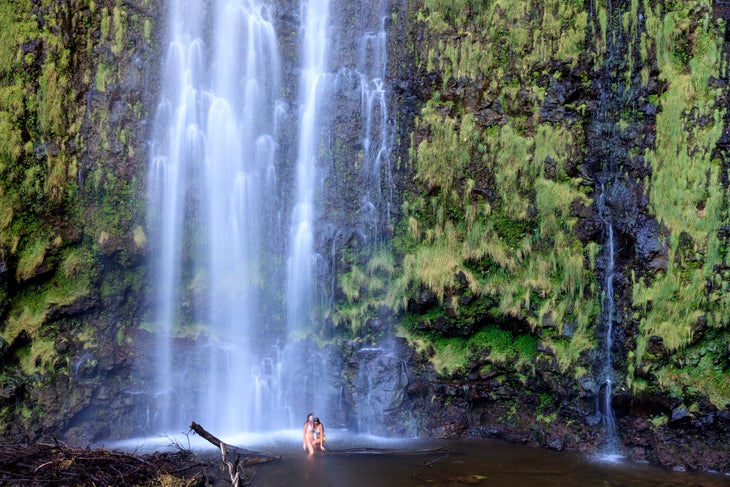
- 4 miles roundtrip
- 650 feet elevation gain
- Out and back
- Moderate
Enter a natural sound garden as you pass through a bamboo forest on this 4-mile out and back trail near Hana, on Maui’s wet side. The bamboo clicks and oscillates in the breeze, making for a musical accompaniment like wind chimes. The trail contours up the Ohea Stream; bring your swimsuit for a refreshing splash in the Seven Sacred Pools, a series of ponds in the creek linked by waterfalls. Continue up to the Makahiku Falls, a stunning, 185-foot cascade, and pass an ancient banyan tree to the even higher 400-foot Waimoku Falls, which sits surrounded by lush fern-covered basalt walls. Cross the stream to get right up under the falls and enjoy a natural shower. Watch your step on the way back as wet rocks and mud can make for slippery conditions.
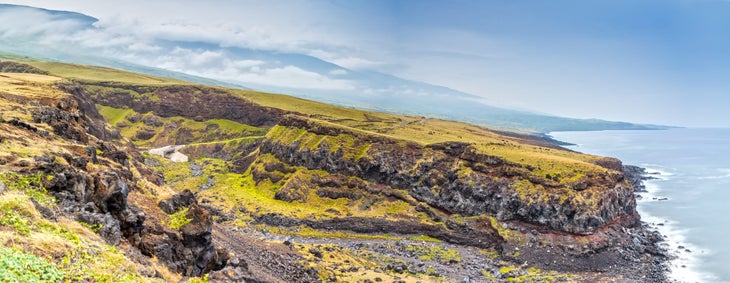
- 5 miles roundtrip
- 1,534 elevation gain
- Out and back
- Moderate
Watch humpback whales breach and cavort in the waters off Māʻalaea Harbor on this 4.7 miles round trip hike. Peak whale watching runs November to May, though you can spot whales all year and this trail is open year-round.The route zigzags upward over and around lava rock, following an old road that traverses the southern end of West Maui. Historians believe that the trail, which is over 200 years old, is actually part of the Ala Loa Trail that once connected communities all across the island. After crossing the broad Manawainui Gulch, top out at 1,600 feet near the Kaheawa wind turbine farm and take in the spectacular views of sea to the summit of Haleakalā, a shield volcano rising from verdant uplands to a pointed cone. Bring plenty of water and sturdy boots.
Best Beach Hike: La Perouse
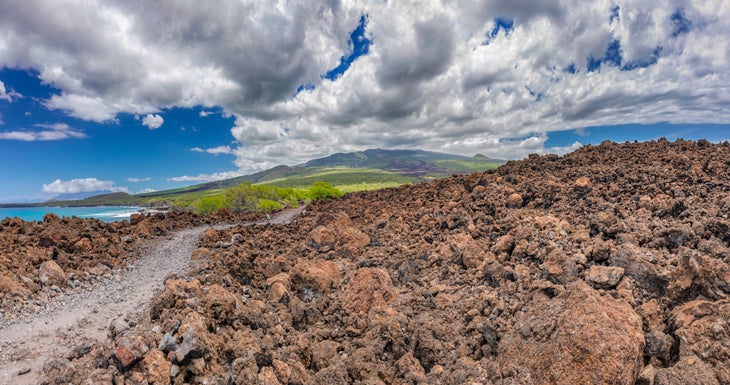
- 6 miles roundtrip
- 80 feet elevation gain
- Out and back
- Easy
Explore the remnants of Haleakala’s last eruption in 1790 on the southeast shore at La Perouse Bay. The 6-mile round trip Hoapili Trail begins at La Pérouse Bay (Keone’o’io Bay in Hawaiian), named for the French explorer Jean François de Galaup, comte de Lapérouse, who was the first European to anchor near Maui in 1786. Pass the ruins of an old Hawaiian village as you traverse lava fields along the rugged shore, revealing hidden beaches offering a refreshing swim. The waters teem with tropical fish, including the colorful Humuhumunukunukuapua`a, the Hawaiian state fish, making for outstanding snorkeling. Make sure to bring plenty of water and sunscreen on this sun-exposed trail, which is best traversed in the cooler mornings and evenings
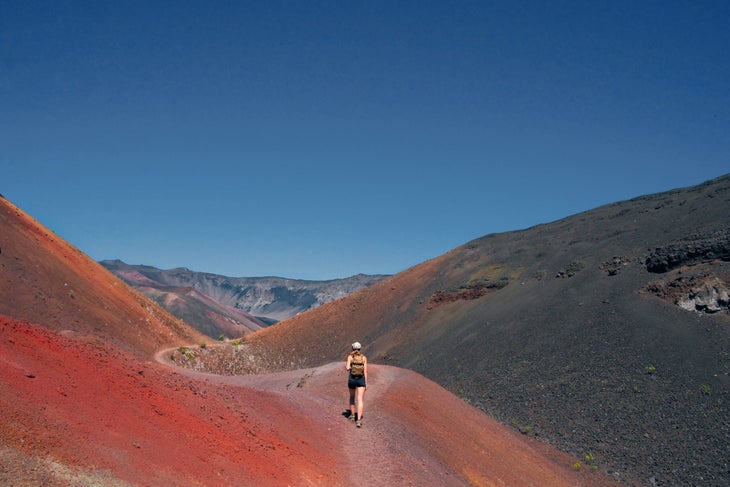
- 11 miles roundtrip
- 2795 elevation gain
- Out and back
- Difficult
Glorious views of Haleakalā’s inner volcanic cone greet you as you head down the Sliding Sands Trail, a 11-mile down and back route starting from the Haleakalā Visitors Center at 10,023 feet. The well-graded, well-maintained track zigzags down towards the crater floor, revealing ochre, tan, brown and blackened lava rocks and cinder cones that change in tone as the sun moves through the sky and clouds and mist float through, softening the contours of the rocky, wind-swept terrain. You’ll find little shade on this trail and only occasional scrub plants, including the glittering silver swords, which are well-adapted to this dry, high-altitude climate. Since what goes down must come up, save plenty of energy and water for the lung-straining return to the top.
Best Introduction to Maui: Kaupo Trail
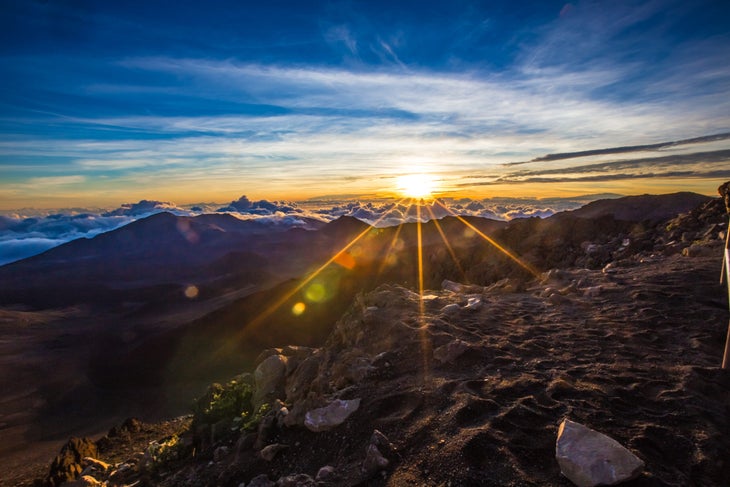
- 13.5 miles
- 5,725 feet elevation gain
- Out and back
- Difficult
Nicknamed the Sea to Summit trail, the Kaupo Trail is a 13.5 mile lightly-traveled out-and back-trail climbing to Palikū Cabin on the esatern edge of Haleakalā’ crater. This strenuous hike (5,724 feet elevation gain) traverses the entire range of the island’s ecosystems: the ʻOheʻo stream, a riparian habitat supporting native fish and shrimp, rare dry forests of endangered gouania trees, windward rainforests, subalpine shrublands home to the Nēnē goose, and alpine stretches where silverswords grow. This route is best for fit, experienced hikers who love to get off the beaten path, are competent navigators, and don’t mind getting up close and personal with local vegetation (bring long pants, hiking poles, plenty of water, and water purification). Experience awe-inspiring Maui sunsets and sunrises, deep silence and incredible stargazing by booking a permit to camp or stay at the Palikū Cabin located at 6,380 feet.
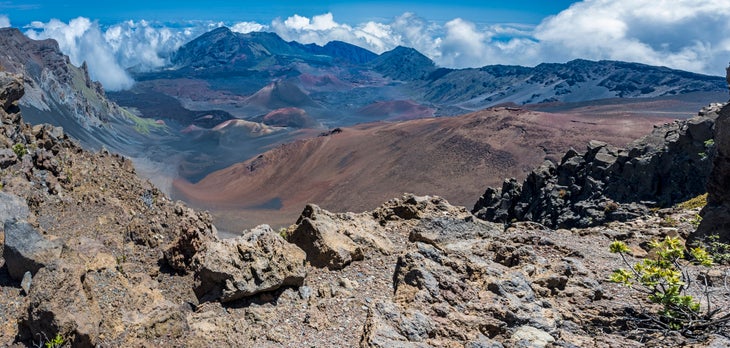
- 11 Miles Roundtrip
- 1850 elevation gain
- Point to point
- Difficult
Obtain a coveted permit to camp or stay in the huts of the Haleakalā crater to experience the best backpacking on the island. Numerous itineraries beckon, with the Sliding Sands to Halemauu Trail (11 miles) proving one of the most popular. Book a stay at the Kapalaoa or Hōlua Cabins to enjoy the beauty and spectacle of the inner crater. Take the Sliding Sands Trail down to the crater floor, where you can investigate colorful cinder cones and watch clouds hypnotically soaring over the summit. On the return, take the Halemauu Trail to explore the lusher side of the crater floor, and then ascend switchbacks up to the Halemauu Trailhead. You can head for the hiker pick up to hitchhike back up to the top or meet your ride to complete the journey. Expect everything from cold, windy weather to bright sunshine.
What to Bring to Hike on Maui
Hikes in Hawaii, whether on the coast or inland, tend to be hot and humid. Bring a sun hat and sunscreen, as well as sunglasses. A wicking shirt is recommended, especially at warmer lower elevations. Though the heat and the beaches might tempt you to try hiking in sandals, most of the trails are rough and sometimes rocky, so bring sturdy trail runners or boots. Even if the weather looks alright at the trailhead, toss in a shell in case of a rainshower. Headed to the summit of one of the island volcanoes? Add some insulating layers to your pack; it can get cold at high altitudes.
Nicholas O’Connell is the founder of www.thewritersworkshop.net.
